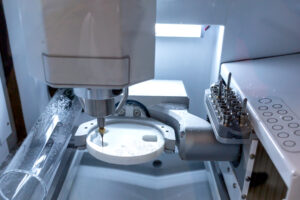Intro
Bringing a new medical device to the market can be an exciting prospect. You have the potential to help countless people across the globe and make enough money to fund future projects. However, the full process is more difficult than you might think.
In this guide, we’ll walk you through the 8 phases associated with developing a medical device and bringing it to market. We’ll outline why each phase is so important, and how to find success during each step.
Phase 1: Conceptualization and Ideation

Just like any other product, your medical device has to start with some brainstorming. This step might involve napkin sketches and conversations with other experts in the field. This step might take a few months of throwing around ideas and seeing what sticks.
During this phase, you should be thinking from the perspective of a consumer: why do they need this product, how will it help them, and what other products on the market might they choose instead?
Phase 2: Understanding Requirements and Regulations
Since you’re working in the medical industry, there are a number of extra FDA regulations you have to adhere to. At the same time, you need to come up with a list of requirements that come from the user — does the part need to be a certain size, have certain features, or include adapters that connect to other components?
These will all be non-negotiable requirements that will be built into your final part and design.
Phase 3: Design and Validation
In this phase, you’ll start doing some CAD work. The design doesn’t have to be final, but it needs to be a complete prototype-grade CAD model. You’ll need a fully dimensioned cut sheet of 2D manufacturing drawings in this phase as well.
Validation can be done through simulations and checks on your screen to ensure all of the requirements are met. You might also want to meet with stakeholders to review your design before you start manufacturing anything.
Phase 4: Prototyping and Testing
This phase is all about physical testing and results. This phase starts with fabricating a one-off prototype version of your part from a service bureau or machine shop like Rapid Axis. From there, you’ll use the physical prototype to run destructive tests and other checks.
During this phase, try to get as much information as possible from the design and part. Take a note of any shortcomings of the design and make sure you fix those design flaws in the next iteration.
This is also a good time to show the physical version of the medical device to different stakeholders, ask users for feedback, and get a better understanding of what the cost of your device will be.
Phase 5: Design Iteration
If you received any negative feedback from your medical device in phase 4, you’ll have to start correcting the design in this phase. You might repeat phases 4 and 5 multiple times before the design is perfect.
Every iteration should have at least one improvement over the previous version. You might focus on bringing down the cost, adding more features, or making the device more usable.
Phase 6: Clinical Trials
Legally you can’t sell your medical device in America unless you go through clinical trials and get approval from the FDA. That means it’s time for some trials.
These trials ensure that your device is safe to use and doesn’t pose any long-term risk to the user.
Phase 7: Full Production and Launch
With a perfect design and an approved result from your clinical trials, you’re ready for full production. Make sure you pick the right manufacturing method so you can reach the right production rate for the right price. You can partner with a production machine shop such as Rapid Axis to determine pricing. Your marketing team should focus on launching the product and building a buzz around your new device.
Phase 8: Market Feedback and Iteration as Needed
Even after your part is designed, tested, and released in a full-scale capacity, your work isn’t done. As the market evolves or new devices hit the market, you’ll need to pivot and adapt. Part of this entails getting feedback from people who used your device and considering what they have to say — maybe you’re due for a sister product or a revision to your design after a few months or years.
As trends shift, demand for your device can grow or shrink. It’s important that you use your business acumen to make changes to your company or device to keep up with the times.
Conclusion
You just learned about the 8 phases of developing a medical device. At Rapid Axis, we’ve helped a lot of medical companies take their napkin sketch into a legitimate product — and we can help you, too. We are a full-scale machine shop that offers prototyping, production, and finishing steps that you need. Get a free quote today.
